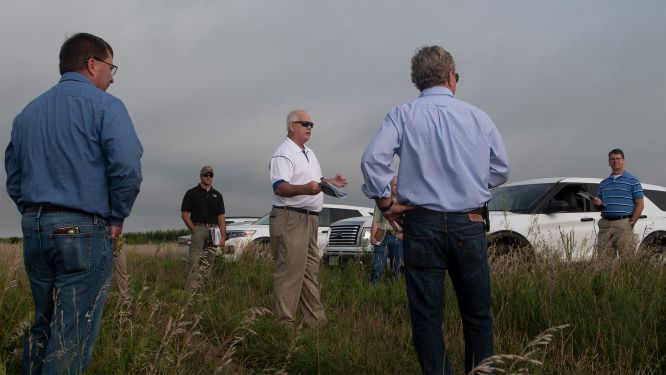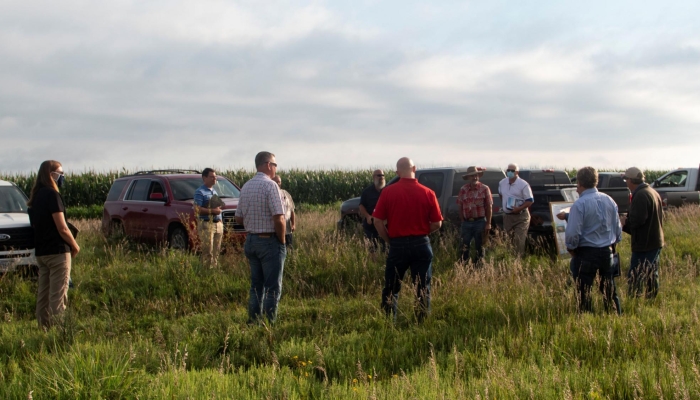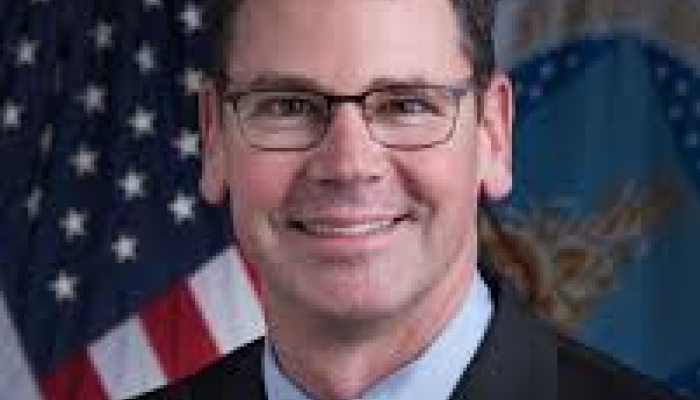USDA’s Natural Resources Conservation Service Chief Visits Nebraska Sites, Including Upper Big Blue NRD
Matt Lohr, United States Department of Agriculture’s (USDA) Natural Resources Conservation Service (NRCS) chief, spent time in Nebraska last week to learn more about conservation projects and partnerships in the state. His visit included sites in the Upper Big Blue and Lower Platte North Natural Resources Districts. Lohr visited locations where conservation activities from cover crops to wetland restoration have been implemented to get a better idea of the vital natural resources work happening in Nebraska.
The first stop was Lake Wanahoo Recreation Area near Wahoo. Like other NRD managed recreation areas, Lake Wanahoo is a multipurpose structure that provides wildlife habitat and flood damage reduction as well as recreation opportunities for Nebraskans. Lohr met with a variety of NRCS and NRD employees to learn more about the NRD system and Nebraska’s unique approach to natural resource management. This was followed by farm tours in Douglas, Lincoln, and Ceresco, to view conservation activities on the ground, such as soil health initiatives including reduced tillage and cover crops.
On the second day of his Nebraska travels, Lohr visited the Kirkpatrick Wildlife Management Area in York County to meet with Upper Big Blue NRD producers Gayle Marsh and Kim Siebert. The Kirkpatrick Basin area is a wetland managed by the Nebraska Game and Parks Commission. It is part of the larger Rainwater Basin, a collection of wetlands across south central Nebraska that provides essential habitat to millions of migratory birds. Siebert grazes his cattle in the Kirkpatrick Basin each year as part of a public/private collaboration to maintain the vegetation in the area. The Rainwater Basin Join Venture and the Upper Big Blue NRD are involved at the site, providing Siebert with equipment to make grazing his cattle more convenient. The impact of the cattle is similar to the native bison who once roamed this area, mowing down invasive species, turning the soil, and spreading seeds of beneficial plants.
Marsh is a fourth-generation farmer in Giltner. Since 2010, Marsh has been working with the Rainwater Basin Joint Venture to protect 50 acres of wetlands on his property while increasing the profitability of his operation. The partnership allowed the Marshes to improve irrigation practices and grazing infrastructure through cost-share funds from the “Divots in the Pivots” Regional Conservation Partners Program, available through NRCS.
“We were honored to have producers in the Upper Big Blue NRD be included in Chief Lohr’s visit. We are proud of the work that is going on here,” said David Eigenberg, general manager. “Nebraska’s NRDs have a long history of working collaboratively with producers and other agencies to protect lives, protect property, and protect the future for our district residents.”
Upper Big Blue NRD General Manager David Eigenberg presents to NRCS staff and others at the Kirkpatrick Basin near York. NRCS Chief Matt Lohr is far right.



